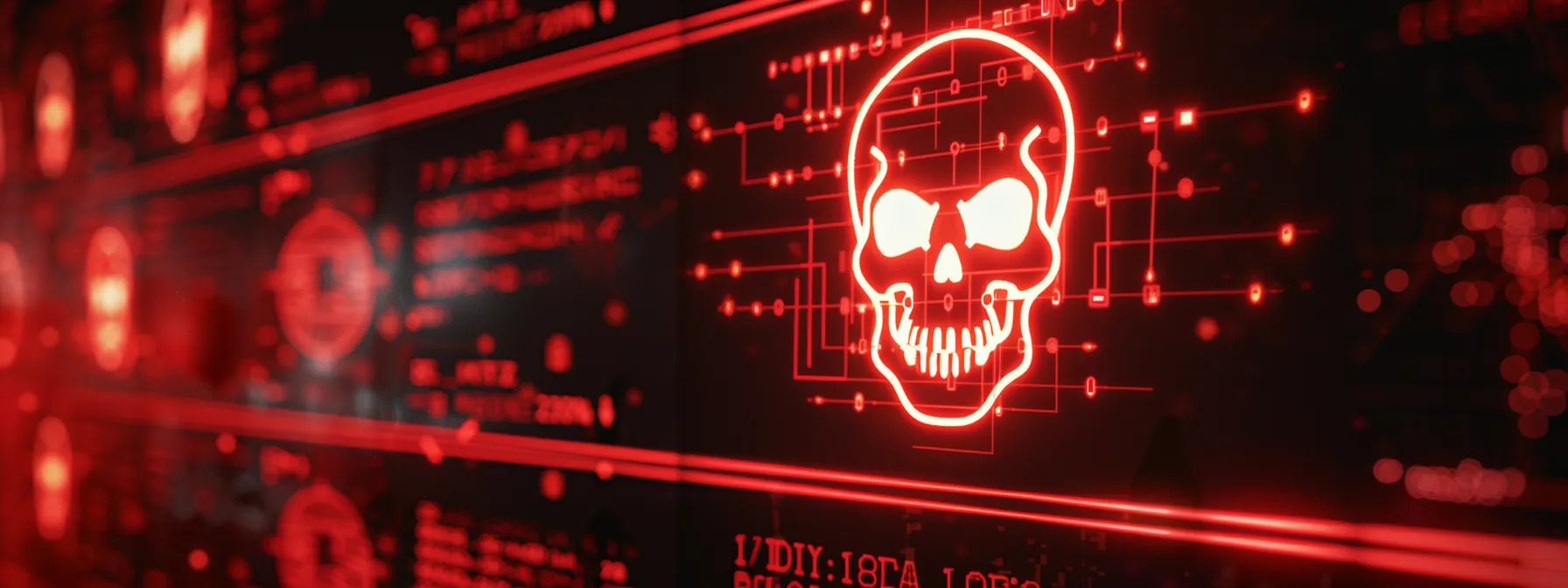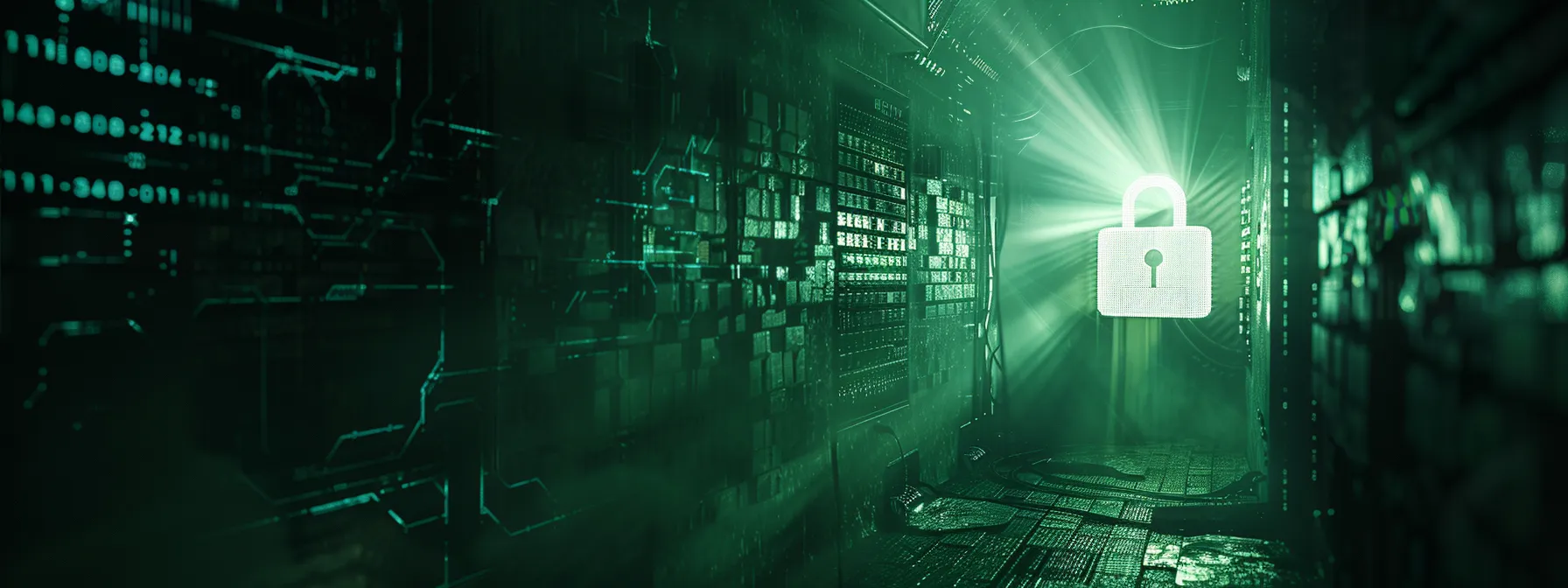
Ransomware attacks have surged by 150% in the past year, putting businesses and individuals at risk. This guide will help you quickly identify ransomware threats and attacks, focusing on common types, early warning signs, and protective strategies. By understanding these key aspects, you’ll be better equipped to safeguard your systems against ransomware exploits, including those targeting vulnerabilities in platforms like Kaseya. Learn how to spot potential threats early and implement effective patches to protect your data from this growing cybersecurity menace.
Key Takeaways
- Ransomware infiltrates systems through various methods, often exploiting vulnerabilities and weak security measures
- Early detection of ransomware is crucial, involving monitoring for file changes and unusual system behavior
- Regular data backups, software updates, and strong access controls are essential for ransomware protection
- Employee education on phishing and social engineering helps reduce the risk of successful attacks
- Quick isolation of infected devices and contacting cybersecurity experts are vital steps in ransomware response
Understanding Ransomware and Its Threats

Ransomware poses a significant technology risk to organizations, using extortion tactics to demand payment. This section explores how ransomware infiltrates systems, often through stolen credentials or weak passwords. It examines the impact on businesses and recounts notable attacks, highlighting the growing threat landscape in cybersecurity.
How Ransomware Infiltrates Systems
Ransomware infiltrates systems through various cyber threats, exploiting vulnerabilities in firewalls and weak security measures. These attacks often lead to significant data loss and extended periods of downtime, causing substantial disruption to business operations. The increasing complexity of ransomware techniques poses a growing challenge for organizations, requiring constant vigilance and robust cybersecurity practices to mitigate risks effectively:
- Phishing emails with malicious attachments
- Exploiting software vulnerabilities
- Remote Desktop Protocol (RDP) attacks
- Drive-by downloads from compromised websites
- Supply chain attacks targeting third-party software
The Impact of Ransomware on Organizations
Ransomware attacks can devastate organizations, causing significant financial losses and operational disruptions. When cybercriminals encrypt critical data, businesses often face tough choices between paying hefty ransoms or losing access to essential information. This impact extends beyond immediate costs, potentially damaging company reputation and customer trust. Organizations must prioritize robust backup systems, implement comprehensive incident response plans, and deploy advanced antivirus software to protect their servers and data from breaches.
Notorious Ransomware Attacks in Recent History
Recent years have witnessed several high-profile ransomware attacks that have shaken organizations and highlighted the importance of robust cybersecurity measures. These attacks have exploited social engineering tactics and exposed weaknesses in user management practices, significantly impacting the reputation and integrity of affected businesses. Notable incidents include the Colonial Pipeline attack, which disrupted fuel supply in the United States, and the Kaseya attack, which affected thousands of companies worldwide:
- WannaCry (2017) – Affected over 200,000 computers across 150 countries
- NotPetya (2017) – Caused billions in damages to global companies
- REvil attack on JBS Foods (2021) – Disrupted meat production in multiple countries
- DarkSide attack on Colonial Pipeline (2021) – Led to fuel shortages in the US
- Conti attack on Ireland’s Health Service Executive (2021) – Severely impacted healthcare services
Common Types of Ransomware Attacks

Ransomware attacks come in various forms, each targeting systems and data differently. Crypto ransomware encrypts critical files, while locker ransomware blocks system access. Scareware uses fake alerts to trick users, and doxware threatens data exposure. Understanding these types helps in developing effective defense strategies against malware like REvil, aiding in data recovery and compliance with payment laws.
Crypto Ransomware: Encrypting Critical Data
Crypto ransomware encrypts critical data, posing a severe threat to organizations’ critical infrastructure. This type of attack often evades extended detection and response systems, making incident response challenging. Cybercriminals use sophisticated encryption algorithms to lock files, demanding payment for decryption keys. The process may involve data exfiltration, where attackers steal sensitive information before encryption, adding another layer of extortion. Organizations must implement robust backup strategies and security measures to protect against these threats:
- Regular data backups and offline storage
- Advanced threat detection systems
- Employee training on phishing and social engineering
- Network segmentation to limit attack spread
- Incident response plans for quick recovery
Locker Ransomware: Blocking System Access
Locker ransomware targets a computer’s operating system, blocking user access to the entire device. Unlike crypto ransomware, it doesn’t encrypt individual files but locks the user out of the system entirely. This type of attack poses a significant challenge to an organization’s cybersecurity and infrastructure security, often requiring specialized endpoint security measures for effective prevention and recovery. The Cybersecurity and Infrastructure Security Agency recommends building resilience against such attacks through regular system backups and employee training to recognize potential threats before they escalate to a full system lockout.
Scareware and Fake Security Alerts
Scareware and fake security alerts manipulate users into believing their systems are infected, prompting them to download malicious software or pay for unnecessary solutions. These tactics often bypass traditional access control measures, exploiting human psychology rather than technical vulnerabilities. Organizations can protect against scareware by implementing robust Microsoft Entra ID authentication, educating employees on recognizing legitimate alerts, and utilizing cloud storage for secure backups. Enabling comprehensive insurance policies can also help mitigate financial risks associated with these deceptive attacks.
Doxware or Leakware: Threatening Data Exposure
Doxware, also known as leakware, threatens to expose sensitive data unless a ransom is paid. Unlike traditional ransomware that encrypts files, doxware exfiltrates data and uses the threat of public disclosure as leverage. Attackers may use artificial intelligence to sift through stolen directories, identifying key information for maximum impact. This type of attack poses a significant risk to organizations, as it can lead to reputational damage and legal consequences even if the initial encryption is overcome.
| Ransomware Type | Primary Tactic | Potential Impact |
|---|---|---|
| Doxware/Leakware | Data exfiltration and exposure threats | Reputational damage, legal consequences |
| Crypto Ransomware | File encryption | Data loss, operational disruption |
| Locker Ransomware | System access blocking | Complete system unavailability |
Early Indicators of a Ransomware Threat

Recognizing early signs of ransomware is crucial for network security and cyber resilience. This section explores key indicators: unexpected file changes, system slowdowns, unusual network activity, and sudden payment demands. Understanding these signals helps organizations boost their threat intelligence and develop effective customer success stories in combating ransomware across the cybersecurity landscape.
Unexpected File Extensions or Locked Files
Unexpected file extensions or locked files serve as early warning signs of ransomware attacks. Organizations using software as a service platforms should monitor file behavior closely, as sudden changes in extensions or inaccessible files often indicate encryption by malicious software. IT teams must stay vigilant and implement robust detection systems to identify these anomalies quickly, ensuring compliance with the General Data Protection Regulation and minimizing the impact of potential ransomware threats:
| Warning Sign | Potential Indicator | Recommended Action |
|---|---|---|
| Changed File Extensions | Files ending in .encrypted, .locked, etc. | Isolate affected systems immediately |
| Inaccessible Files | Unable to open common documents | Run malware scans and check backups |
| Ransom Notes | Text files with payment instructions | Disconnect from network and alert IT security |
Unusual System Slowdowns or Crashes
Unusual system slowdowns or crashes often signal potential ransomware attacks. Organizations must remain vigilant for these symptoms, as they may indicate a computer virus attempting to encrypt files or exfiltrate data to the cloud. Prompt ransomware detection is crucial for maintaining regulatory compliance and protecting sensitive information. IT engineering teams should monitor system performance closely and investigate any unexplained drops in speed or frequent crashes, as these could be early signs of a ransomware threat in progress.
Strange Network Activity or Traffic Spikes
Organizations should monitor network activity closely for unusual spikes or patterns, as these can indicate a potential ransomware infection. Sudden increases in outbound traffic might suggest data exfiltration, while unexpected internal network scans could point to malware spreading. Implementing robust analytics tools and Microsoft Entra ID can help detect these anomalies early, allowing IT teams to respond swiftly and minimize the impact of an attack. A proactive strategy involving regular network analysis and threat hunting is crucial for identifying and mitigating ransomware threats before they escalate.
Sudden Demands for Payment or Pop-Up Messages
Sudden demands for payment or unexpected pop-up messages are clear indicators of a ransomware threat. These alerts often claim to have encrypted the user’s files and demand payment in cryptocurrency for the encryption key. Cybercriminals use this tactic to create urgency and panic, hoping to pressure victims into paying quickly. Organizations should train employees to recognize these signs and report them immediately to their IT security team, as prompt action is crucial in mitigating the impact of a potential cyberattack:
- Suspicious pop-ups demanding payment
- Messages threatening data deletion
- Screens displaying countdown timers
- Instructions for cryptocurrency transactions
- Claims of system or file encryption
How to Quickly Identify Ransomware Attacks

Quickly identifying ransomware attacks is crucial for protecting intellectual property and preventing financial losses. This section covers monitoring security logs, using anti-malware tools, checking for unauthorized encryption processes, and verifying file integrity. These steps help organizations detect threats early, safeguarding their data and systems from ransomware attackers who often demand cryptocurrency payments over the internet.
Monitoring Security Logs for Anomalies
Monitoring security logs for anomalies plays a crucial role in preventing ransomware attacks. Organizations should pay close attention to their security information and event management (SIEM) systems to detect unusual activities that may indicate a threat actor’s presence. By analyzing logs from various sources, including remote desktop protocol connections, security teams can identify potential ransomware threats before they escalate into full-blown attacks.
Utilizing Anti-Malware and Detection Tools
Organizations can leverage anti-malware and detection tools to quickly identify ransomware attacks. These tools continuously scan systems for suspicious activities, flagging potential threats before they can exploit vulnerabilities in the database or authentication processes. By analyzing patterns and behaviors associated with known ransomware variants, these tools provide an essential layer of defense, alerting security teams to investigate and respond promptly to protect sensitive data and information.
Checking for Unauthorized Encryption Processes
Organizations can detect unauthorized encryption processes by monitoring system activities closely. Security software should track unusual file access patterns or sudden increases in CPU usage, which may indicate ransomware at work. IT teams should regularly review infrastructure logs for unexpected encryption operations, especially those targeting critical data or attempting to download suspicious files. Implementing robust data security measures and maintaining clear communication channels within the organization can help quickly identify and respond to potential ransomware threats.
Verifying Integrity of Critical Files and Backups
Verifying the integrity of critical files and backups is essential in quickly identifying ransomware attacks on Microsoft Windows operating systems. Organizations should regularly check file hashes and timestamps to detect unauthorized changes, which could indicate encryption by ransomware. Implementing server message block protocols with robust security features can help protect against phishing attempts and prevent damages to critical data. IT teams should also conduct periodic restoration tests of backups to ensure they remain uncorrupted and readily available in case of a ransomware incident.
Strategies to Protect Against Ransomware

Protecting against ransomware requires a multi-faceted approach. Organizations should implement regular data backups, keep software updated, enforce strong access controls, and educate employees on phishing risks. These strategies, combined with endpoint detection and response systems and HTTPS encryption, help safeguard against threats from the dark web and beyond.
Implementing Regular Data Backups
Regular data backups serve as a critical defense against ransomware attacks. Organizations should implement automated, frequent backups of critical data, storing copies both on-site and off-site to ensure redundancy. IT teams need to test these backups regularly to verify their integrity and ensure quick restoration in case of an attack, minimizing downtime and data loss.
Keeping Software and Systems Updated
Keeping software and systems updated is crucial in protecting against ransomware attacks. Organizations should implement a robust patch management process to address vulnerabilities promptly. This includes regularly updating operating systems, applications, and security software to close potential entry points for attackers. IT teams can use automated tools to streamline the update process and ensure all systems are protected with the latest security patches.
Enforcing Strong Access Controls and Passwords
Enforcing strong access controls and passwords is crucial in preventing ransomware attacks. Organizations should implement multi-factor authentication and require complex passwords that are regularly updated. IT teams can use password management tools to help users create and store secure passwords, reducing the risk of weak credentials being exploited. Regular security audits and access reviews ensure that only authorized personnel have access to sensitive systems and data, limiting potential entry points for ransomware attacks.
Educating Employees on Phishing and Social Engineering
Educating employees on phishing and social engineering is crucial in protecting organizations against ransomware attacks. Companies should implement regular training programs that teach staff to recognize suspicious emails, links, and attachments. These sessions should cover real-world examples of phishing attempts and provide practical tips for identifying and reporting potential threats. By fostering a security-conscious culture, organizations can significantly reduce the risk of successful ransomware attacks through human error.
Responding to a Ransomware Incident

When faced with a ransomware incident, quick action is crucial. This section covers key steps: isolating infected devices, contacting cybersecurity experts, reporting to authorities, and restoring data from secure backups. These measures help minimize damage and speed up recovery, ensuring organizations can respond effectively to ransomware attacks.
Isolating Infected Devices From the Network
When a ransomware attack is detected, isolating infected devices from the network is crucial. IT teams should immediately disconnect compromised systems from both wired and wireless networks to prevent the malware from spreading. This rapid response helps contain the threat and limits potential damage to other devices and data within the organization’s infrastructure.
Contacting Cybersecurity Professionals
When facing a ransomware incident, organizations should promptly contact cybersecurity professionals. These experts can provide crucial guidance on containment strategies, forensic analysis, and recovery options. Engaging specialized help ensures a more effective response, potentially minimizing data loss and operational downtime. Organizations should maintain a list of trusted cybersecurity firms or have retainer agreements in place for quick access to expert assistance during crises:
| Action | Purpose | Outcome |
|---|---|---|
| Contact cybersecurity experts | Obtain specialized guidance | Improved incident response |
| Perform forensic analysis | Identify attack vector and scope | Targeted containment strategy |
| Develop recovery plan | Restore systems and data | Minimized downtime and loss |
Reporting the Attack to Authorities
Reporting a ransomware attack to authorities is a crucial step in responding to the incident. Organizations should contact law enforcement agencies, such as the FBI or local cybercrime units, to report the attack and provide details about the incident. This information helps authorities track cybercriminal activities, potentially leading to the identification and prosecution of attackers. Additionally, reporting can assist other organizations by contributing to a broader understanding of current ransomware threats and tactics.
Restoring Data From Secure Backups
Restoring data from secure backups is a critical step in recovering from a ransomware attack. Organizations should have a well-tested backup restoration plan in place, allowing them to quickly reinstate clean versions of affected files and systems. IT teams need to carefully verify the integrity of backups before restoration to ensure they haven’t been compromised by the ransomware. This process often involves using isolated, clean systems to restore data, minimizing the risk of reinfection.
Conclusion
Identifying ransomware threats quickly is crucial for protecting organizations from devastating attacks. By recognizing early warning signs, implementing robust security measures, and maintaining vigilant monitoring practices, businesses can significantly reduce their vulnerability to ransomware incidents. Regular employee training, up-to-date security protocols, and a well-prepared incident response plan are essential components of an effective defense strategy. Swift action in isolating infected devices, engaging cybersecurity experts, and restoring from secure backups can minimize damage and ensure rapid recovery in the event of an attack.